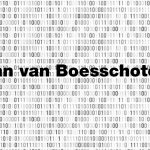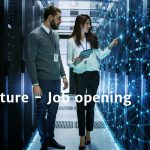We talk to Steve Manzanero, European systems engineering director at Tintri, about AIOps in storage and the benefits it can bring to storage management.
In this podcast, we look at how organisations can benefit from being able to analyse storage infrastructure operations trends as it works with compute and virtualisation layers.
Manzanero talks about how increased visibility into the nuts and bolts of storage infrastructure can help organisations react to the needs of workloads and place data and compute where it is best for cost and performance reasons.
Adshead: How are artificial intelligence (AI) and machine learning (ML) becoming integrated into storage infrastructure and why?
Manzanero: It’s interesting, when we look at AI and ML, I think it is fundamentally one of the most game-changing technologies we’ve seen in a long time. In the same way as in 1948 the transistor was first put together.
We’re starting to see trends in our business, especially in our customer base, that are looking to bring some intelligence into technology that, in some cases, dates back to the 1950s.
So, having the capability to look at your infrastructure and to look at the goings-on, the inner workings and the interaction between the hypervisor, the storage, the network, and everything else that goes with it, and how that actually moves around, and being able to extrapolate that data across numerous customers. For example, fingerprinting an application and looking into the future, and looking back and being able to look at trends is becoming more and more important.
The days of “I just want a LUN and I want 100TB, I want some connectivity into my hypervisor”, is gone. The AIOps around this is becoming really important.
I think when we look at machine learning, when we look at technologies like bfloat16 being part of the process of technologies from Intel, IBM and ARM, for instance, all bringing this together, w.hat we see is a way of crunching huge amounts of data and making informed choices where the AI comes in.
As a company, I am lucky because Tintri has been doing this for well over 15 years, with platforms built on this type of intelligence. It’s understanding the fundamental parts and processes that our customers are working towards. It’s being able to look into the hypervisor in-depth, and understand each and every part of that virtual machine, and to be able to bring that together.
So, that’s where fundamentally from a storage perspective the old days are gone, but the new days of understanding the architecture and the way it works becomes important to us.
Adshead: What key trends are you seeing in AIOps, with reference to storage?
Manzanero: What we’re seeing with the advent of cloud is customers having a great choice in where they locate their workloads.
So, it means the cloud is here to stay, and I’m a great advocate of it and specific workloads. Where AIOps is making a massive difference is being able to pinpoint the specific workloads that are business-critical and being able to keep them on-prem, and the less impactful workloads and move those up into the cloud.
I’m very lucky and have seen a lot of our customers look at a hybrid model moving forwards, and AIOps is the key. It’s that understanding, that trend analysis, understanding where your peaks and troughs are, and understanding what’s important to your business.
One of the key parts of this is distributed computing so cloud becomes part of the strategy. So from a storage perspective, it’s having that knowledge and intelligence.
It’s having the capability to pick that workload up and actually place it in the right direction, and place it in the right area.
One day it could be on-prem. Next day it could be up in the cloud. Fundamentally, I think AIOps is the driving piece, the step change for technology today as the transistor was in the 1940s.
From a storage perspective, it’s being able to interact with the hypervisor but also what’s in the cloud and being able to fingerprint those workloads.















